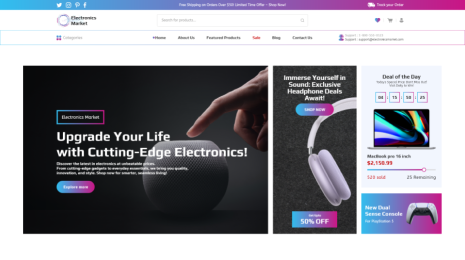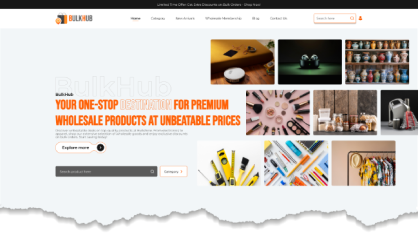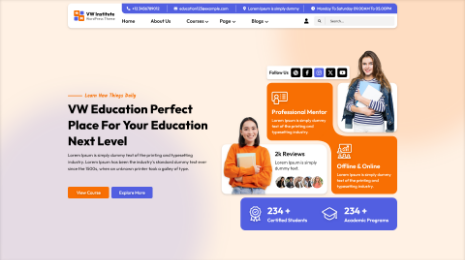
In the dynamic landscape of online interactions, integrating a chatbot into your website has become a pivotal step towards enhancing user engagement and providing efficient customer support. A chatbot not only facilitates instant communication but also streamlines various processes, making the user experience seamless. In this comprehensive guide, we'll walk you through the process of adding a chatbot to your website in just five quick steps. Whether you're a business owner, a developer, or a curious enthusiast, you'll find this step-by-step guide invaluable in harnessing the power of chatbots to elevate your website's functionality and user satisfaction.
What exactly is a chatbot?

First things come first. All of us have been aware of chatbots before, but what are they truly and Add chatbots to websites they work on?
A chatbot is an AI tool with scripts that communicates with people via various channels. Take Telegram, Facebook Messenger, and WhatsApp, for example. Chatbots enable efficient and profitable work. They can also help you create leads and improve your conversion rate.
For those looking to incorporate chatbots into their websites, there are even free WordPress themes available, providing a cost-effective way to enhance user engagement and streamline communication. These themes offer a user-friendly platform to add chatbot to website seamlessly into the WordPress environment.
1. Select the particular type of chatbot that will work best for your company:
Selecting the type of chatbot that your business requires is crucial before you start creating one.
What will be the primary purpose of your chatbot? Are you aiming to improve customer service at all times or boost conversions and lead generation?
After that, you can additionally utilise your unique chatbot for several purposes.
The advantages of a chatbot for client service:
Chatbots for client service enable you to offer assistance at all times by assisting users of your website in selfish and quickly solving issues. It can assist in reducing the total number of incoming emails coming from clients and freeing up team members' time for more complicated problems.
Assistance for customers Additionally, chatbots have the ability to make offers depending on information about customers or your running campaign, as well as point customers to other services according to their data.
The advantages of a chatbot for lead generation:
Chatbots for generating leads can help you improve conversions and optimise your revenue potential. They may ensure a positive client experience while helping you generate quality leads.
You may discover more about what your clients are seeking through these conversations with your lead generation chatbot and those who are your intended audience.
Chatbots for lead generation perform successfully in places with high intent. Thus, add chatbot to website on service and price pages, for instance, is a good chatbot best practice.
When using lead generation chatbots, you should think about the bot's goal. Is the goal to:
- Inform people?
- Qualifies and pushes users to the sales chat?
- Concentrate on starting small conversions.
2. Choose the KPIs for your chatbot:
By identifying key indicators of performance (KPIs), you can use the most important data fragments to determine how successful your chatbot is. This will help you keep a focus on the objectives that you have for your chatbots.
You may use the following questions to outline your chatbot's primary success indicators:
- How will you evaluate the success of the chatbot?
- What will you measure, just?
- What results are you looking to track?
Your KPIs frequently display the intended action of the chatbot engagement, which is the action you would like the consumer to take.
The quantity of CTAs clicked, buttons and links clicked, forms filled out, or successful purchases made via the chatbot are a few instances of these kinds of KPIs.
3. Understand the needs of chatbot clients:
After establishing your goals, it's a good idea for you to focus on audience compatibility.
In the initial stages of building a chatbot from scratch, users also need to design a bot user persona. Who precisely will have to use your bot?
Consider the goal of the client and the ways in which the chatbot assists them when they first engage with it to help you create your chatbot user persona.
Make a conscious choice to summarise the information you provide in just one sentence. For more information on the chatbot usage scenarios, users can add an additional short assertion.
4. Give personality to the chatbot:
You may now relish developing a chatbot's personality after establishing your user persona. Understanding what users want will help you choose the vocabulary and tone of voice for your chatbot.
Consider your chatbot as a part of your business; thus, it is important to strike a balance between meeting user needs and maintaining brand consistency.
How can a chatbot acquire personality? Consider including these personality characteristics in your chatbot's design:
- Common language, maybe even business jargon.
- Emojis that fit the brand.
- Asking for gifs and pictures to go alongside the text.
- A friendly picture for an avatar.
- Offer your bot an imaginative name.
5. Build the conversation flow of your chatbot:
Now that you have things set up, you can begin visualising the flow of your chatbot's conversations. Your chatbot's interactivity will be built around the conversation flow.
When organising your chatbot's flow, examine the kinds of questions that users want to have answered when interacting with the bot.
Imagine the course of the discussion as a decision tree. Make a diagram with as many alternative message alternatives as you can; you can accomplish this digitally as well as using post-it notes.
Select the open-ended response choices that will direct the user to the following prompt or the intended page after completing your major opening messages.
You can start thinking about design once you have the basic text for your chatbot's conversation flow outlined.
How would you like each view in the chatbot to appear? Will there be buttons, text fields, links, videos, images, drop-down menus, and additional features in your chatbot views?
At the end, verify that the chatbot's dialogue flow corresponds to your brand and has an obvious function in directing the user.
6. Design your bot:
It's time to get your fingers filthy well, as dirty as one can get when developing a chatbot from scratch.
Now is the ideal moment to implement your strategy, start building your bot and add chatbot to website!
You are able to use a bot template and create a chatbot from scratch using drag-and-drop features when using a fully integrated design platform.
When developing a chatbot, the following should be your top priorities:
- Make modifications to your views.
- Modify the fonts and colours.
- Configure the element and button actions.
- Set up your objectives.
7. Test and preview:
Let's see when all your effort in creating bots has paid off. You need to preview and test your bot on yourselves before releasing it for others to use.
You should try out every possible setting for your chatbot's flow when previewing it.
This entails verifying that there are no glitches by testing every button and input choice and proceeding along that path until the desired outcome. There might be a few distinct button and path options to try, but everyone is well worth exploring.
It's crucial to test, as your chatbot will show up on various screens and modify looks properly.
8. Focus on your chatbots:
We went over who (your business and the website's visitor), what (chatbots), when (on your site), and the reason (guiding the visitor) so far; however, the when and how of each are still up for debate.
Answering the time, when, and how questions in the formula for creating a chatbot will be made easier by establishing your chatbot's target rules.
Numerous automatic triggers are available to start your chatbot. Whether you wish to focus on your bot as determined by one or more parameters is entirely up to you.
Are you having trouble choosing which chatbot targeting choices are best for your website? Take ideas from these concepts when creating your chatbot triggers:
- Which page is the client currently on?
- Where they started out, including the campaign URL, before page, or traffic source
- Where is the visitor located?
- Which device a tablet, cell phone, or desktop are they utilising?
- The number of times they have been to your website
Your chatbots will become more capable in terms of who to target and what kind of automatic message to send once they understand your targeting guidelines.
9. Measure and make improvements:
Recall the way you chose your KPIs in the second step? After your bot is operational and live, it's time to start tracking its efficacy. This will assist you in optimising your content and continuously raising your chatbot's metrics for success.
A few chatbot metrics to monitor are as follows:
- Activity of chatbots: When are they being used?
- Bounce rate: How often do individuals leave after failing to complete the intended actions? This can assist you in understanding where consumers stop using your bot and where any problems may be in your system.
- Goal completion: What percentage of a particular action carried out by your bot is successful? How many users reach your particular goals?
- Effectiveness: How many people were able to make use of your bot to acquire the assistance they needed without needing to get in touch with your customer support team?
It's critical to monitor tangible results that have a direct influence on your company, but it's also important to get user input on the capabilities of the bot.
- How do users of the chatbot you created feel about it?
- Do they find the services it offers acceptable?
- Are they utilising this tool to its maximum potential?
How to add chatbot to website:

If you are building a website and willing to integrate chatbot, our previous blog mentions some of the best free AI chatbots that have easy integration. You must check them out!
Offer your website a chatbot connection.
It's time to assist yourself with getting started, and you should be excited about adding chatbots to websites. Adding chatbots to websites is simple and only takes five steps.
1. Request the chatbot:
Add chatbot to website To start your chatbot, select the green + sign.
The next step is to choose the primary language and assign your chatbot an internal title. Just in case you decide to add additional chatbots in the future, verify that the title makes sense.
Choose the channels that are most pertinent to your company. We'll use the website chat in this instance. If otherwise, you'll need to first create a chat channel on your website.
You must seek chatbot access to clients from Google Dialog Flow in order to link the chatbot to Google's artificial intelligence approach. You may find a step-by-step guide about how to finish this process in Trengo.
2. Set up the chatbot:
Your first Add chatbots to websites was just formed. Congratulations! It's time to add your own twist now. The "Content" and "Advanced Options" settings are separated as follows:.
a. Content:
You can give your Add chatbots to websites a name to begin with. I offer you my advice on how to make this nickname memorable and amusing. You can also customise the fallback and introductory text in these options.
We have already filled in these instances and given you the essentials. Feel free to create your own code to further personalise your chatbot.
b. Advanced options:
Your chatbot can be fully customised to what you want. Trengo provides a few more choices:
- Agent fallback: Your chatbot will route the interaction to the support staff if it is unable to give an answer to a question.
- Failure limit: The chatbot records the number of times it is unable to respond to a question. The chatbot will forward a question to the team faster if the failure limit is low.
- Limit on partial answers: The chatbot may respond to more complicated queries with what it has understood during the exchange.
- Agent fallback confirmation: The visitor gets asked by the chatbot if they would like to speak with a human being.
- Answer confidence: A chatbot's level of confidence regarding its reaction to a query is indicated by the greater the answer trust percentage.
3. Teach the chatbot:
Now is the moment to feed your chatbot business data. Let's begin by categorising things. Categories like general, customer service, and sales are a few of the ones you can add. This provides you with a simple-to-understand summary of each inquiry and response your chatbot is capable of.
You are able to update your categories with new questions and responses. Complete every single one of the following questions with the same answer. In this manner, even when someone visiting asks a question using a different method, the chatbot will know how to respond.
4. Test the chatbot:
You have the ability to test your chatbot. The chatbot is certain that the query and its response match. It's also possible that red indicates a comparable percentage. The chatbot will indicate in real time that he fails to understand the inquiry.
5. Honour your newest team member:
It's time to add chatbot to website and celebrate the addition of your new staff member. To get started, just click on the green button, save the modifications, and you're set.
Conclusion
As we conclude this comprehensive guide, you've successfully learned the five quick steps to seamlessly add chatbot to website into your website. From selecting the right platform to customizing your chatbot's functionality, you've gained insights into enhancing user engagement and providing efficient customer support. Embracing this technology not only modernizes your website but also positions your online presence at the forefront of user-centric interactions. By implementing a chatbot, you're not just keeping up with the trends; you're proactively shaping a dynamic and responsive digital experience for your visitors. As the digital landscape continues to evolve, your website equipped with a chatbot is poised to stand out in the ever-expanding realm of online interactions.
To further amplify your website's capabilities, consider exploring the WP Theme Bundle. Our theme collection not only ensures regular updates, premium support, and compatibility with the latest WordPress versions but also integrates seamlessly with chatbot functionalities. By combining the power of a well-implemented chatbot with the versatile themes provided by our Bundle, your website is poised to offer a truly dynamic and engaging user experience. Embrace these advancements, and watch as your online presence flourishes in the ever-evolving digital landscape.









